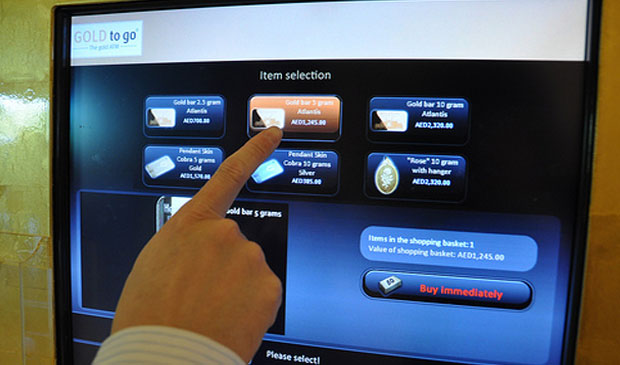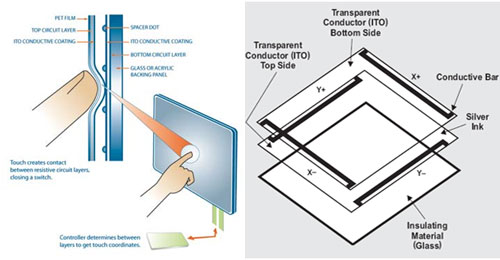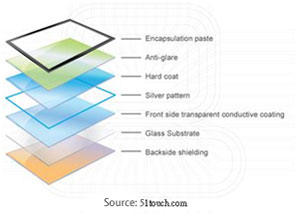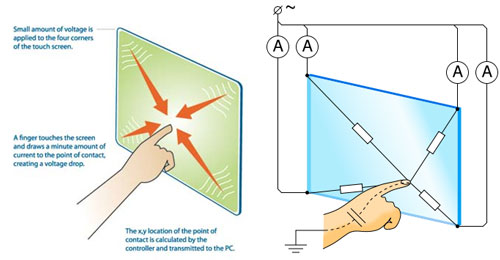- Press Center
- Touch Sensor-Resistive touch screen & Capacitive touch screen
Touch Sensor-Resistive touch screen & Capacitive touch screen

A touch screen sensor is a clear glass panel with a touch responsive surface. The touch sensor/panel is placed over a display screen so that the responsive area of the panel covers the viewable area of the video screen. There are several different touch sensor technologies on the market today, each using a different method to detect touch input. The sensor generally has an electrical current or signal going through it and touching the screen can cause a voltage or signal change. This change is used to determine the location of the touch to the screen.
Resistive touch screens :
Resistive technology is versatile and economical for applications such as food service and retail point of sale, industrial process control and instrumentation, portable and handheld products and communication devices. Resistive touch screens consist of a glass or acrylic panel that is coated with electrically conductive and resistive layers made with indium tin oxide (ITO) .The thin layers are separated by invisible spacers.

Characters:
- Cost effective solutions
- Activated by a stylus, a finger or gloved hand
- Not affected by dirt, dust, water, or light
- 75%~85% clarify
- resistive layers can be damaged by a very sharp object
Capacitive touch screen :
Capacitive technology offers durability, reliability, and optical clarity. Popular applications include gaming machines, ATM installations, kiosks, industrial equipment, and point-of-sale. Surface capacitive technology consists of a uniform conductive coating on a glass panel. Electrodes around the panel’s edge evenly distribute a low voltage across the conductive layer, creating a uniform electric field.

Working principle:
A human body is an electric conductor, so when you touch the screen with a finger, a slight amount of current is drawn, creating a voltage drop. The current respectively drifts to the electrodes on the four corners. Theoretically, the amount of current that drifts through the four electrodes should be proportional to the distance from the touch point to the four corners. The controller precisely calculates the proportion of the current passed through the four electrodes and figures out the X/Y coordinate of a touch point.

Characters:
- Durable and resistant to scratches for demanding applications
- Faster and more responsive
- Immune to surface contaminants
- Superior optical clarity, brighter display and less surface reflection
- Must be touched by finger, will not work with any non-conductive input
Resistive touch screen & Capacitive touch screen compare :
| Comparison Project | Resistive touch screen | Capacitive touch screen |
| Multi-point touch | Not supported | supported |
| Stylus Type | Stylus | Finger |
| Operating Pressure | Need | Do not need |
| Accuracy | Low | High |
| Calibration | Need | Do not need |
| Transparency | Low | High |
| Surface hardness | Low | High |
| Life | short | Long |
| Cost | Low | High |
Source : Retrieve network information













